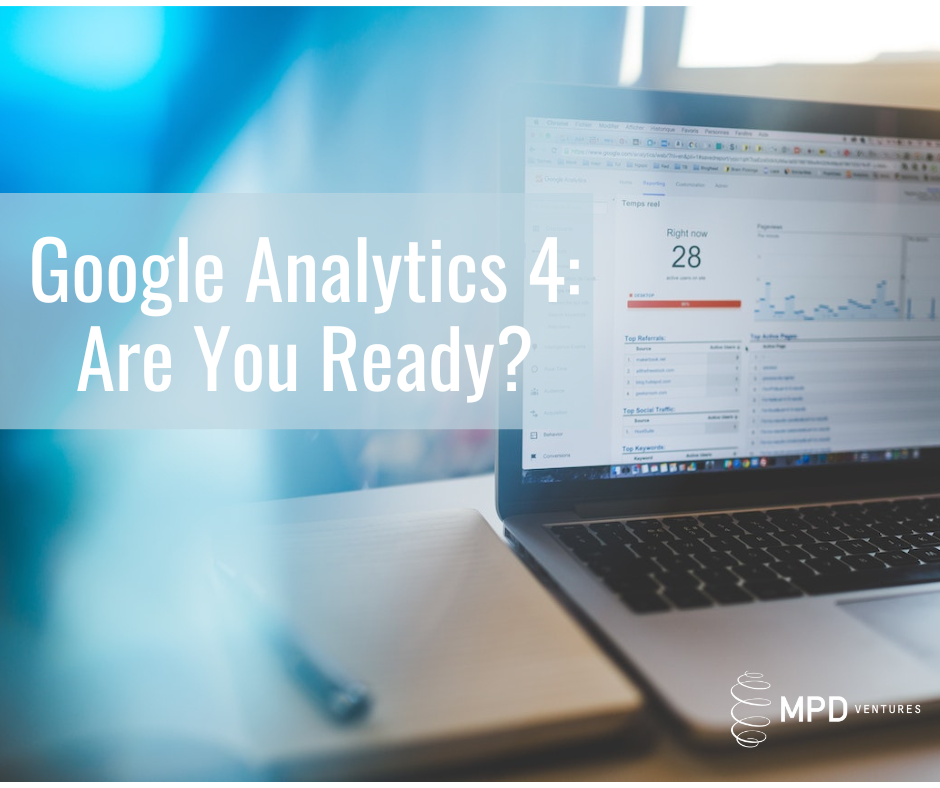
Written by Vicki Powers
I’m sure you heard the rumblings of migrating to Google Analytics 4 (or GA4), an entirely new platform purposely built to provide more granular data focused on customer and user experience. The countdown is on! Google’s Universal Analytics will stop recording new data July 1, 2023, and historical data will only be accessible six months after.
At MPD, we’ve been reading about and using GA4 for months. In fact, we’ve already installed it for all our clients to run alongside the existing Universal Analytics. This is a critical step and one you should make as soon as possible — but certainly before year-end. If you are counting on using historical data to influence your organic search engine optimization planning, the time is now.
But why the switch? And what does this mean for you or your clients?
November 11, 2005, marks the beginning of Google Analytics, according to Brian Clifton, who was just five weeks into his job as Head of Web Analytics at Google Europe. Suddenly, Google released a free version of analytics for the first time. The demand was strong with 100,000 new accounts in the first week. Google had to shut down new sign ups for a while to handle the load.
But the world was different back then, when it was released. Remember hit counters on websites? Today there are apps and phones connecting to the Internet, data privacy laws, users saying they don’t want to be tracked, and more. Google made an upgrade in 2013 with Universal Analytics (UA). But at some point, you can’t keep adding on to the original structure. Google knows what the future holds and decided to stop adding on and start over with GA4.
The transition to GA4 will be more challenging than the upgrade to UA. Businesses got behind the idea back then because they knew everything would be the same – just better. That’s not the case with GA4. This migration requires additional set up, configuration, and learning curve.
As a new platform, experts believe it’s going to feel clunky and be challenging to navigate in the beginning. Plus, it’s different. For example, UA has goals to track conversations and efficiency. GA4 doesn’t have goals, it has events. And everything is an event: session start events, page load events, click events. It’s pretty much anything a visitor can do on the website. Much of the transition to GA4 will be creating new custom reports to capture the new reporting features.
But change is good. One aspect marketing folks are excited about is tracking the customer journey on more than one platform.
Just like MPD, many marketing firms have set up GA4 now and are running it alongside Universal Analytics. One reason is it will take time to learn it. Another is to be able to collect GA4 data for a while before the complete migration takes over. Because it’s a new platform, GA4 will only collect data from the time it’s set up.
Here are a few things you can do right now if you haven’t started the transition:
Need some assistance preparing for GA4? Our team is ready to handle the GA4 setup for you, if needed. We also can help you look at ways to change your reporting format and metrics once the new platform rolls out.
Imagine our world five years from now. Technology will be different, as usual. But the folks entrenched in data collection will probably be laughing at this type of article when GA4 is the norm!